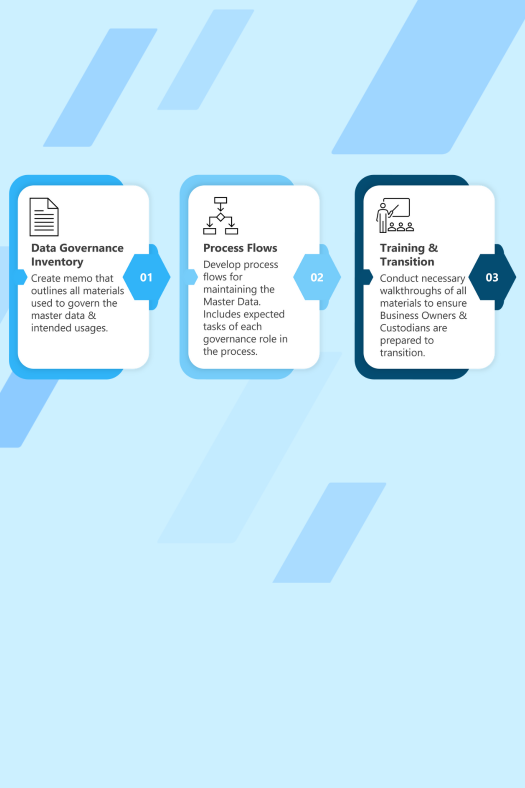We get it – the stakes are high when choosing EPM or ERP software for your business, and finding the right fit can be a challenge. We’re sharing four strategies to make the software selection process easier, whether you’re working with an implementation partner or going it alone. Plus, we’re looking at three outdated mindsets that you should leave in the past.
Four Strategies for an Easier Software Selection Process
STRATEGY #1
Get Executive Sponsorship First
Approaching the software selection process with a “top-down” mentality is key. Getting executive buy-in makes selection, implementation, and rollout much easier. Conduct interview sessions with leaders and stakeholders to build their “wish list” for the new software and get them on board. In the interviews, be sure to ask:
- What are the top priority business goals for next year and beyond?
- How would “the right” system or software benefit our company? (Ask for specific examples.)
- What slows us down the most in our current system?
- What’s the budget for the new system or software?
You’ll use this information to help set the tone for what needs to be accomplished and maintain alignment with the executives’ goals.
How an implementation partner can help: A partner can take the responsibility off your plate by leading (or helping lead) interview sessions, capturing input from key executives, and documenting as needed.
STRATEGY #2
Rank Software Requirements (Don’t Just List Them!)
Now that you’ve nailed down leadership’s vision, it’s time to gather specific requirements. Create a document outlining essential user and business needs and circulate it with those who will use the new software. Provide a universal scoring system so teams can rank their top priorities.
Remember to include note-capturing fields so that comments and justifications can be recorded to substantiate the rankings and scoring. Questions to ask teams as they add to the software selection documentation:
- What are the biggest issues with our current solution?
- What problems does the new product need to solve?
- What workflows must the new software incorporate?
- List the must-have technical features.
- What does an ideal implementation and support look like?
How an implementation partner can help: An experienced partner can provide templates and tools for capturing requirements and applying objective scoring systems. They’ll be sure you consider all relevant factors and bring an unbiased perspective to the prioritization process.
STRATEGY #3
Obtain Order of Magnitude Estimates Early
The software selection process will be much more efficient if you get estimates early on, even if they are only ballpark estimates. With the overarching budget information in mind, you can easily:
- Eliminate products and vendors that are too expensive: This may seem obvious, but dangling a shiny, unaffordable product in front of stakeholders happens more than you would think. (And it’s a headache to redirect excited colleagues to an in-budget option).
- Create internal resource estimates: You’ll be able to decide how to allocate the budget based on product type. Cloud-based products mean more administrative management, whereas on-prem applications require more internal support and maintenance.
How an implementation partner can help: A partner will leverage their industry knowledge to provide current cost estimates, identify hidden costs, and steer you away from over-budget solutions early in the process.
STRATEGY #4
Go Beyond a Product Demo & Talk to Real Users
Demos are great at showing you what’s possible for each software–and be prepared to hear that a lot is possible–but sitting through an explanation of every bell and whistle isn’t the best use of your time. Before agreeing to a demonstration, give the company performing the demo a real-life use case or requirement criteria for your business. This way, you’ll see how the product would solve your unique challenges instead of hearing about features you don’t need.
After the demo, ask for at least two customer references that utilize functionalities your organization is interested in. We always recommend:
- Only talking to companies that are using the product and functionality in a live production environment
- Conducting the calls without the software vendor on the line
- Asking questions! Peers are typically more than willing to share information to help you make an informed decision
How an implementation partner can help: A partner not only knows a lot about a variety of software, but they also likely have first-hand experience with companies using each technology. So they can help steer you toward demos they think would be a good fit and arrange conversations with customer references.
3 Common Mistakes to Avoid During Software Selection
It’s easy for busy leaders with good intentions to slip and resort to antiquated mindsets that hinder a successful selection process. (This is why many finance teams often turn to a third party to assist.) Our experts recommend avoiding these common mistakes:
MISTAKE #1
Trying to Perfectly Calculate ROI
Understanding the cost difference between a new software and the legacy product you’re replacing is one of the the biggest deciding factors. However, the quest for a perfect ROI calculation can lead you in circles.
Instead of trying to come up with a formula, we recommend holding certain assumptions true across all products under consideration, such as internal system administration support costs. Items like this should not have a material swing on the analysis, which will prevent you from attempting to estimate the costs with utmost certainty.
We’ve also found that calculating the ROI for back-office software is more of an art than a science. We recommend sticking to a five- or 10-year cost of ownership analysis as the basis for comparison.
MISTAKE #2
Putting the Wrong Person in Charge
All too often, we see an organization’s procurement or project management team trying to run a software selection process for a department they don’t understand. This inevitably leads to unnecessary frustration and an uninformed decision.
If you’re looking at a finance or accounting system, your team should be comprised of department members who will use the software. These individuals should prioritize requirements and evaluate software since they will ultimately own the solution. Procurement and project management teams can still support operations like documentation, scheduling, and negotiations. However, they should not drive the selection process.
MISTAKE #3
Making Decisions Without Buy-in
If key resources are not involved early and often, it’s a recipe for missed or improperly prioritized requirements and creates re-work for the selection team.
For instance, a Director of FP&A cannot simply task their team with finding the next financial planning solution. The director needs to be involved in key meetings, participate in reviewing requirements, and help ensure possible software fits the organization’s goals and objectives.
When stakeholders are involved in the selection process, it leads to greater participation during implementation and adoption of the new solution.
We Can Make the Process Easier (Seriously!)
We understand the pressure you’re under, your teams are probably already stretched thin. That’s why many companies opt to work with an expert implementation partner who specializes in supporting companies at every step of the process. If you’re interested in working with a partner, our team has helped hundreds of organizations transition to a new ERP or ERM and we’d love to help you, too!




